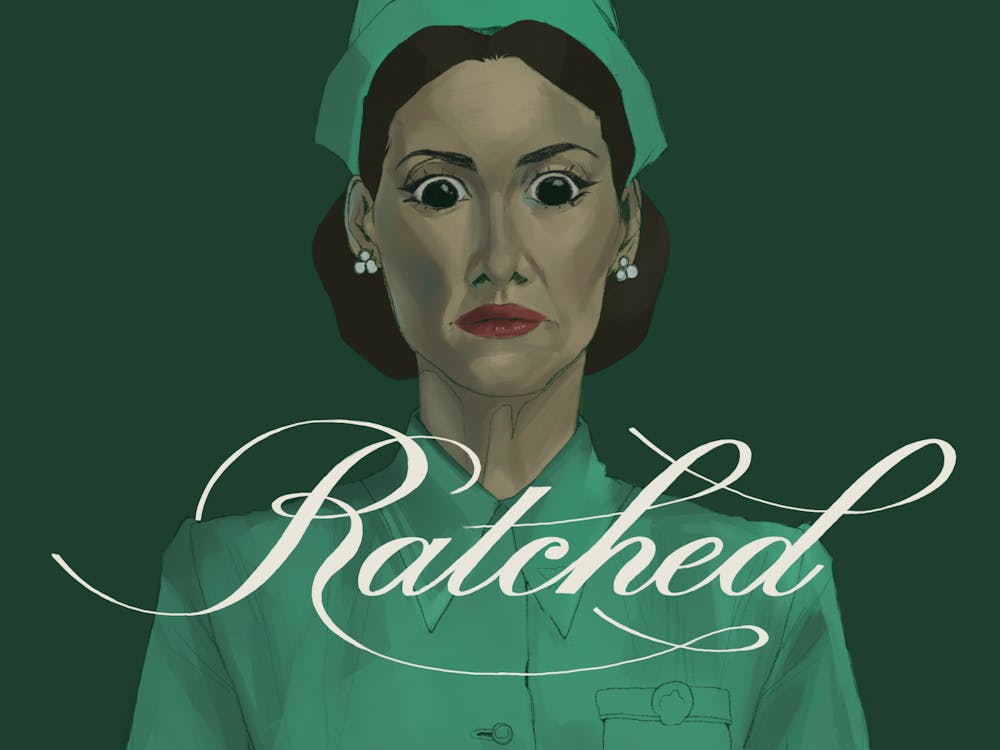Ratched, director Ryan Murphy’s original prequel–adaptation of ‘One Flew Over the Cuckoo’s Nest,’ was recently released on Netflix in mid–September. Set at St. Lucia Hospital in Monterey County, California, the series follows the backstory of Nurse Mildred Ratched, the psychiatric nurse who was transformed into a symbol of monstrousness and institutional power abuses in the 1975 film. Murphy is known for creating the popular American Horror Story anthology series, and Ratched follows a similar framework—a compelling story full of chills, thrills, and grotesque yet delicate violence. Despite being widely consumed, the series has received mixed to negative reviews in terms of its story. But I thought the series was terrific: Sarah Paulson was spectacular in her portrayal of Mildred Ratched, and I was immersed in each chapter of Nurse Ratched’s dark origin story.
That’s mostly accredited to the series's production quality. Shows like American Horror Story can get intense at times—and the violence within and around St. Lucia Hospital is no exception to this quality. However, there's a strange attraction to Ratched: despite the violence, you can’t help but stay glued to the screen because of how gorgeous it is, even within gruesome sequences. Visual aesthetics are a trademark feature of Ryan Murphy’s directing style—and we’re here for it. The cinematography and camera work as a finishing complement to vibrant color palettes and lively music, creating a beautiful environment for the various characters within the series. The aesthetic appeal of Ratched also speaks to the cinematic potential within horror as a whole.
Ratched’s beauty begins with the colors displayed throughout the show. Mildred Ratched has a wardrobe of the brightest shades of yellows, greens, and blues. Beyond just Nurse Ratched herself, the series creates unique color palettes for the outfits of each character. Within St. Lucia Hospital, scenes visually juxtapose the striped suits of Dr. Hanover with the aqua uniforms of psychiatric nurses, or contrast Mildred Ratched’s bright yellow outfit with the grey palettes of mysterious characters. Additionally, the colors of each scene’s setting often visually match the mood of the scene through its use of colored ambient lighting.
The show contrasts this with natural imagery, too. Some of the most visually–stunning images are ones that place Mildred’s teal car against a coastal highway in Monterey County, a juxtaposition that you can’t take your eyes off of. The bloody and grotesque actions of Nurse Ratched and other characters often result in eerily beautiful images when they’re done.
Asides from having beautiful colors, the settings within Ratched are all uniquely crafted. From Dr. Hanover’s grand office or operating room, to the maximum–security cells of St. Lucia, or even the dimmed hallways of the hospital wings, there's a stark visual appeal to the design of each setting that creates an even more fitting environment for the characters involved.
What really pulls all of this together is the series’ cinematography. Ratched cinematographer Simon Dennis collaborated with Murphy before, and this production perfectly demonstrates their attention to visual perfection. The series finds a way to perfectly frame any character within the beautiful settings—and that achievement alone makes the show worth watching. The surreal lighting and camera motivation complement the colors and bring an eerie aesthetic to any sequence, no matter how tense or frightening. Ratched also heightens the tension with chilling soundtracks that accompany each episode, bringing the aesthetic aspect of the Ratched viewing experience full–circle. Ratched is one of the first shows for which I don’t skip the intro of each episode, as even this often overlooked portion is a rollercoaster of dazzling images in this series.
The visual emphasis within Ratched is a testament to the possibilities within horror, a genre that might be taken for granted in terms of aesthetic appeal. While the series features gore and other seemingly–unappealing images, the immersion within Ratched’s production illustrates how beauty can be applied to terrifying stories. The genre of horror can benefit greatly from heightened attention to the things that Ratched highlights. Horror is an experience that requires the viewer to relate to everything about the characters, including the sensory moments with goosebumps, fear, and adrenaline spikes. While compelling narratives accomplish this, the most immersive experiences include stellar visuals and cinematography. Ratched does this in a creative way. Given its stellar visual aspects, the hate for the series is unwarranted.
Despite the hate, Ratched was still a commercial success, with nearly 50 million viewers propelling it to Netflix’s top new original of 2020. Ratched might not be universally approved for its narrative substance, but one undisputed thing is the beauty within the horror series' images. For those seeking their next short binge, consider exploring the vibrant visual landscape within the haze of Nurse Ratched’s latest dark tale.

